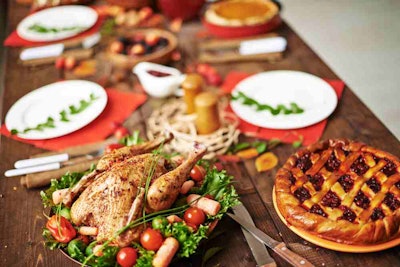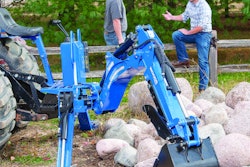
Keith S. Delaplane, University of Georgia professor of entomology, dispels this sensationalized (if often cited) statistic about how bees are responsible for every third bite of food.
The United Nations Food and Agriculture Organization analyzed yearly crop data from 1961 to 2006 and determined that animal pollination is only responsible for 5 percent of the global food production in developed countries and 8 percent in developing countries.
While about 75 percent of the world’s crops do benefit on some level from animal pollination, only 10 percent of that 75 is fully dependent on it.
So, while the fate of the human species is not riding on the survival of bees, our quality of life is sure to be different if the bees disappear. To see just what crops would go missing without our primary pollinators, here is a list of the fruits and veggies that wouldn’t be present for Christmas dinner.
Apples
You can forget about having any apple pie for desert because most apple cultivars are self-sterile and depend on cross-pollination with a compatible cultivar. Multiple bee pollination is required to accomplish a complete pollination. Poor pollination results in small, misshapen apples and fewer seeds. Those that have three seeds or less will not ripen. They drop around early summer.
Almonds
There would be no chocolate almond clusters or cinnamon sugar almonds this Christmas without bees. Like apples, almonds are self-incompatible and therefore require cross pollination. According to the Almond Board of California, about 1.6 million colonies of honeybees are placed in almond orchards at the beginning of the bloom period for pollination.
Blueberries
Yes, it will be a blue Christmas indeed without blueberry scones, pies and cakes. There are several types of blueberries grown, but the rabbiteye variety is the most vigorous and is popular due to its hardiness; that is, it stands up well to disease and heat. Rabbiteye is almost completely self-sterile except for one particular cultivar. Cross-pollination improves the fruit set, size and speed of ripening.
Pumpkins
Although pumpkin pie may be associated more with Thanksgiving than Christmas these days, there are plenty of Christmas songs that say otherwise. Pumpkin plants only set fruit if pollinated by insects and the quality is enhanced by frequent pollinator activity. Because pumpkins have male and female flowers, bees have to transport pollen from one to the other.
Squash
If not for bees, roasted or caramelized squash would be lacking at the table this holiday season. Like pumpkins, squash has male and female flowers. It depends on bee pollinations for increased seeds and fruit weight. Squash flowers only open early in the morning for one day so it is very important that bees visit it during the morning. Squash bees are early risers and forage before honeybees become active.
Cucumbers
There aren’t tons of holiday dishes that use cucumbers, but, without bees, they will not be found on the veggie trays or in leafy salads. Cucumber plants have both male and female flowers and require pollination by bees because its pollen grains are too large and sticky to be moved by the wind. In crops that are mostly gynoecious (female flowers only), it is especially important for bees to pollinate due to the high density of female flowers.
Cherries
No cherry tarts or pies will be available without bee pollination. Like almonds and apples, the majority of sweet cherry cultivars are self-incompatible. With a high sugar concentration in sweet cherry nectar, bees are fond of the blossoms and are good at ensuring cross pollination occurs. Cherries that do not receive adequate pollination do not develop.










